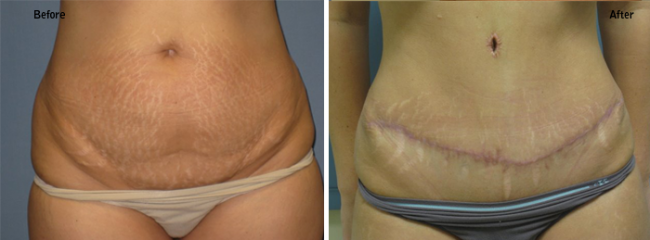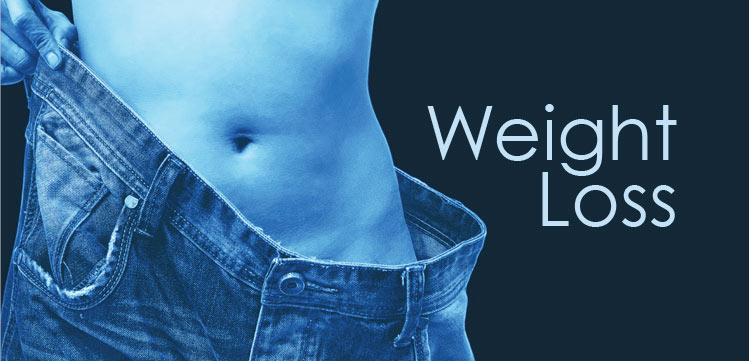Tummy Tuck / Abdominoplasty

A flat and well-toned abdomen is something many of us strive for through exercise and weight control. But regardless of effort, sometimes these methods cannot achieve our goals.
If you want a tighter, flatter abdomen, then a tummy tuck may be appropriate to help achieve your goals. Also known as Abdominoplasty, a tummy tuck removes excess fat, skin, and in some cases restores weakened or separated muscles. This creates an abdominal profile that is smoother and firmer, often enhancing your body image and confidence.
Even individuals of otherwise normal body weight and proportion can develop an abdomen that protrudes or is loose and sagging. The most common causes of this include:
- Pregnancy
- Aging
- Significant fluctuations in weight
- Heredity
- Prior surgery
Tummy tuck surgery is a highly individualized procedure and you should do it for yourself, not to fulfill someone else’s desires or to try to fit any sort of ideal image. Below, you’ll find basic information about rhinoplasty surgery, but the best way to get complete answers to specific questions that relate to your individual needs is to have a personal consultation with Dr. Legere.
Abdominoplasty is a good option for you if:
- You are physically healthy and at a stable weight
- You have realistic expectations
- You do not smoke
Although the results of an abdominoplasty procedure are technically permanent, the positive outcome can be greatly diminished by significant fluctuations in your weight. For this reason, individuals who are planning substantial weight loss or women who may be considering future pregnancies may be advised to postpone abdominoplasty surgery.
What a tummy tuck won’t do:
Tummy tucks are not a substitute for weight loss or an appropriate exercise program. Also, tummy tuck operations cannot correct stretch marks, although these may be removed or somewhat improved if they are located on the areas of excess skin that will be excised, generally the treated areas below the belly button.
Procedural Steps
A tummy tuck involves the surgical removal of excess abdominal fat, skin, and includes tightening of the abdominal wall where muscles have weakened. A full tummy tuck requires a horizontal incision in the area between the pubic hairline and navel. Incision size is largely dependent on the amount of excess skin to be removed. Where correction is isolated to the area below the navel, a limited or mini tummy tuck with a shorter incision at the pubic bone may be recommended. Liposuction may be performed with a mini tummy tuck where excess fat is the only factor.
 An incision just above the pubic area is used to remove excess skin and fat from the middle and lower abdomen.
An incision just above the pubic area is used to remove excess skin and fat from the middle and lower abdomen.
 Skin is separated from the abdominal wall all the way up to the ribs.
Skin is separated from the abdominal wall all the way up to the ribs.
 The surgeon draws underlying muscle and tissue together and stitches them, thereby narrowing the waistline and strengthening the abdominal wall.
The surgeon draws underlying muscle and tissue together and stitches them, thereby narrowing the waistline and strengthening the abdominal wall.
 Abdominal skin is drawn down and excess is removed. With complete abdominoplasty, a new opening is cut for the navel. Both incisions are stitched closed.
Abdominal skin is drawn down and excess is removed. With complete abdominoplasty, a new opening is cut for the navel. Both incisions are stitched closed.
 After surgery, the patient has a flatter, trimmer abdomen. Scars are permanent, but will fade with time.
After surgery, the patient has a flatter, trimmer abdomen. Scars are permanent, but will fade with time.
Following Surgery
Once your procedure is completed, dressings or bandages may be applied to your incisions, and you maybe wrapped in an elastic bandage or a compressions garment to minimize swelling and to support your abdomen as it heals. A small, thin tube may be temporarily placed under the skin to drain any excess blood that may collect. Before you are released following surgery, you and an accompanying family member, friend, or caregiver will be given specific instructions that may include:
- How to care for the surgical site and drains
- Medications to apply or take orally to aid healing and reduce the potential for infection
- Specific concerns to look for at the surgical site or in your general health
- When to follow up with your plastic surgeon
Progress and Healing
Initial healing will include discomfort at the incision sites. Discomfort is common and can be controlled with medication. You will be instructed to return to light walking as soon as possible to minimize the potential for blood clots and other complications.
You must avoid bending, straining, or lifting anything for several days. Dr. Legere may also instruct you not to stand upright, to avoid stressing any internal sutures as they heal, and to sleep with pillows elevating your knees. To assure a successful outcome, it is important that you follow all instructions carefully. A return to light, normal activity is possible as soon as you feel ready, usually within a few days of surgery.
Initial wound healing may take 5 to 10 days. Any sutures will be removed some time after that, if necessary. You will be ready to return to work and normal activity in a few weeks, so long as you do not engage in any heavy lifting or vigorous exercise.
Healing will continue for several weeks as swelling dissipates and incision lines continue to improve. You must practice diligent sun protection until the healing process is fully complete. Continue to follow Dr. Legere’s instructions and attend follow-up visits as scheduled.
Results and Outlook
The results of a tummy tuck are visible almost immediately, however, it may take several months for your final results to fully develop. Numbness and a firm feeling over the skin’s surface will resolve over the following months. It may take a year or more for incision lines to refine to some degree. Although they are permanent, these scars are hidden by most clothing and swimsuits.
Your new profile with a firm and flat abdomen is relative permanent, so long as you maintain your weight and general fitness. As your body ages you may find that some firmness is lost in the abdomen. However, this is minimal compared to the initial conditions that were corrected to achieve your now toned abdomen.







